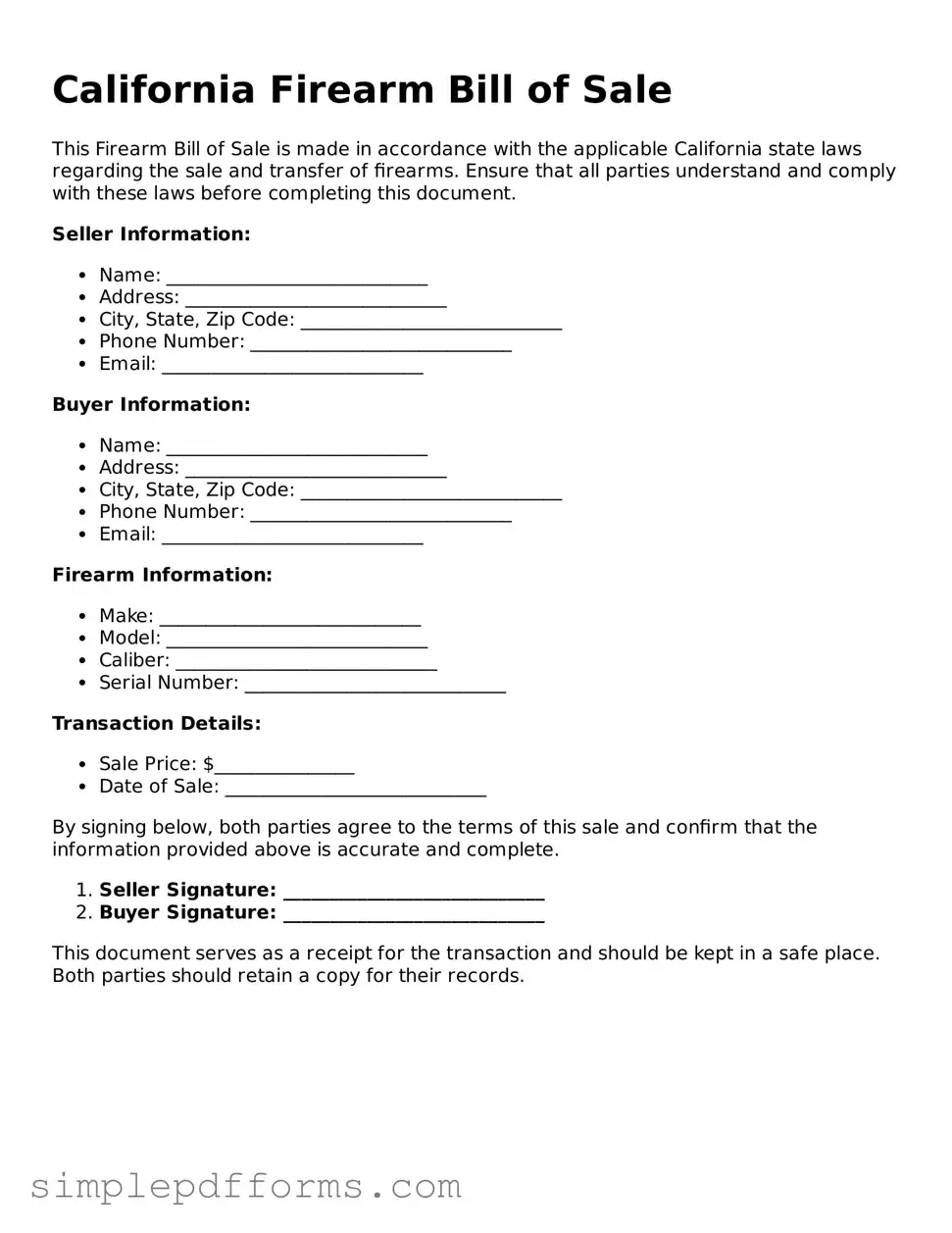Filling out the California Firearm Bill of Sale form can seem straightforward, but many people make common mistakes that can lead to complications. One frequent error is failing to provide complete information about the firearm. This includes not specifying the make, model, and serial number. Without these details, the transaction may not be legally valid.
Another mistake is neglecting to include both the buyer's and seller's information. Each party must provide their full name, address, and signature. Omitting any of these details can create issues down the line, especially if there are questions about ownership.
Many individuals also forget to date the form. A date is essential for establishing when the transaction took place. Without it, there may be confusion or disputes regarding the timeline of ownership.
In addition, some people do not verify that the buyer is legally eligible to purchase a firearm. It's crucial to check that the buyer has a valid identification and meets all legal requirements. Failing to do so can lead to serious legal consequences for both parties.
Another common oversight is not keeping a copy of the completed form. Both the buyer and seller should retain a copy for their records. This documentation can be important if any issues arise in the future.
Moreover, individuals sometimes rush through the form, leading to typographical errors. Even small mistakes in names or numbers can cause significant problems. Taking the time to double-check the information can save a lot of hassle later on.
Finally, some people overlook the importance of understanding the laws surrounding firearm sales in California. Each transaction must comply with state regulations. Being unaware of these rules can result in unintentional violations, which can have serious repercussions.
